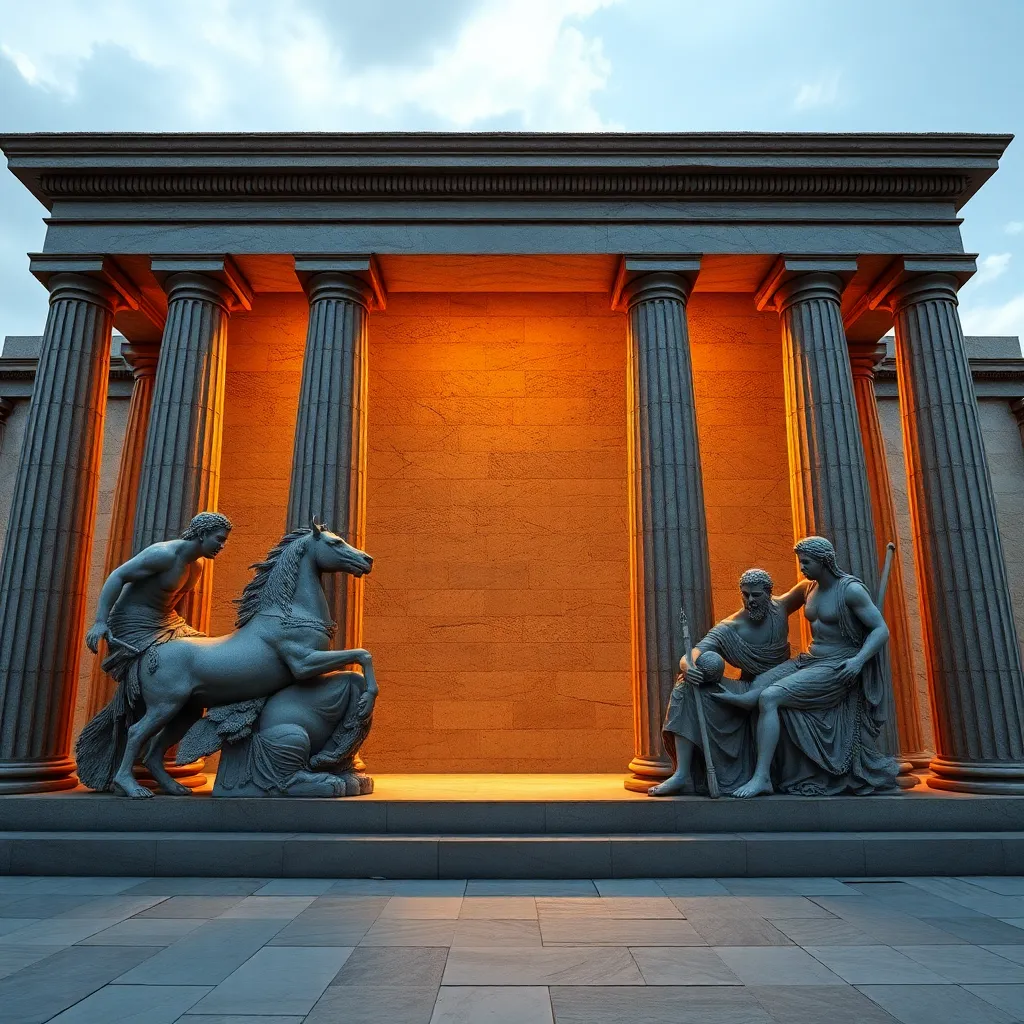The Iliad’s Influence on Art and Visual Representation
I. Introduction
The Iliad, attributed to the ancient Greek poet Homer, is one of the cornerstones of Western literature. This epic poem recounts the events of the Trojan War, focusing on the hero Achilles and his conflict with Agamemnon. The narrative explores themes of honor, pride, and the brutal realities of war, which resonate deeply across cultures and eras. The Iliad’s significance extends beyond literature; it has profoundly influenced various forms of art throughout history.
The intersection of literature and visual art offers a rich field of inquiry. Artists have drawn inspiration from literary works to convey complex narratives, emotions, and themes through visual mediums. This article aims to explore the various ways in which The Iliad has inspired and shaped visual representations throughout history, from ancient Greek pottery to contemporary digital art.
II. Historical Context of The Iliad
The Iliad is set during the Trojan War, a legendary conflict between the city of Troy and the Greek states. The poem is not just a tale of war; it delves into the human condition, examining themes such as mortality, the quest for glory, and the whims of the gods. Its characters, including Achilles, Hector, and Helen, have become archetypes in Western literature.
In ancient Greece, The Iliad had a significant cultural impact, serving as a moral and ethical guide. It was recited at public festivals and became a part of the educational curriculum. The themes of heroism and honor were integral to Greek identity, influencing not only literature but also the visual arts.
Over the centuries, the themes present in The Iliad transitioned into visual art, reflecting the socio-political contexts of different eras. Artists have continually revisited Homer’s epic, reinterpreting its themes to resonate with contemporary audiences.
III. Classical Art and The Iliad
In ancient Greece, The Iliad was often depicted in various forms of visual artistry. Pottery, sculpture, and frescoes served as canvases for these narratives.
- Representation of Scenes in Pottery: Ancient Greek pottery, particularly black-figure and red-figure vases, frequently illustrated scenes from The Iliad. These artworks captured pivotal moments, such as Achilles’ wrath or the duel between Achilles and Hector.
- Sculpture and Narrative: Sculptural works, including reliefs and statues, conveyed the emotional and heroic aspects of The Iliad. The iconic statue of Achilles exemplifies the idealized warrior, embodying the virtue and valor celebrated in the epic.
- Frescoes and Wall Art: Frescoes in classical architecture showcased larger-than-life interpretations of The Iliad’s themes. These artworks often adorned public spaces, reinforcing the narrative’s importance in civic life.
IV. The Renaissance Revival
The Renaissance marked a significant revival of interest in classical texts, including The Iliad. This period saw artists re-examine Homer’s work, integrating its themes into their own artistic expressions.
- Notable Artists: Renowned artists such as Raphael and Peter Paul Rubens drew inspiration from The Iliad. Their works often reflect the grandeur and emotional intensity of Homer’s narrative.
- Key Works: For example, Rubens’ painting “The Judgment of Paris” illustrates the moment when Paris chooses Aphrodite as the fairest, a decision that ultimately leads to the Trojan War.
V. The Iliad in 19th and Early 20th Century Art
The 19th century witnessed the rise of Romanticism, a movement characterized by emotional depth and the glorification of the individual. The Iliad’s themes of heroism and tragedy found new expression in this context.
- Romanticism and Emotion: Artists like John Flaxman created evocative illustrations for The Iliad, emphasizing the emotional struggles of the characters.
- Impressionism and Modern Interpretations: Impressionist artists began to reinterpret The Iliad’s themes in more abstract ways. John William Waterhouse, for instance, painted scenes that captured the essence of longing and conflict, such as “The Siren.”
VI. Contemporary Interpretations of The Iliad
In the contemporary art world, The Iliad continues to inspire a new generation of artists who reinterpret its themes and characters through various mediums.
- Modern Artists: Artists like Robert Rauschenberg and Cy Twombly have engaged with The Iliad, using modern techniques to explore its narratives in ways that resonate with today’s audience.
- Multimedia and Digital Art: The rise of digital art has allowed for innovative representations of The Iliad. Artists are using technology to create interactive installations and virtual experiences that bring Homer’s epic to life.
- Graphic Novels and Visual Storytelling: The Iliad’s influence is also evident in graphic novels, where artists like Gareth Hinds have adapted the narrative into accessible formats, appealing to younger audiences and new readers.
VII. Thematic Analysis of Visual Representations
Visual representations of The Iliad often explore recurring themes that are integral to the narrative’s impact.
- Common Themes: Heroism, fate, love, and conflict are prevalent in visual adaptations. These themes are depicted through expressive poses, dramatic compositions, and symbolic imagery.
- Significance of Heroism and Conflict: The portrayal of heroic figures and their struggles highlights the enduring nature of The Iliad’s exploration of what it means to be human, facing challenges and moral dilemmas.
- Comparative Narratives: Comparing literary and visual narratives reveals how different mediums can interpret the same themes in unique ways, enriching our understanding of the text.
VIII. Conclusion
The Iliad’s enduring influence on art is a testament to its universal themes and compelling narratives. From ancient pottery to contemporary digital art, the epic continues to inspire artists and provoke thought across disciplines.
As we reflect on the relationship between literature and visual representation, it is evident that the stories we tell shape the art we create. Future research and exploration will undoubtedly continue to uncover new interpretations of The Iliad, ensuring that this monumental work remains a vital source of inspiration for generations to come.




